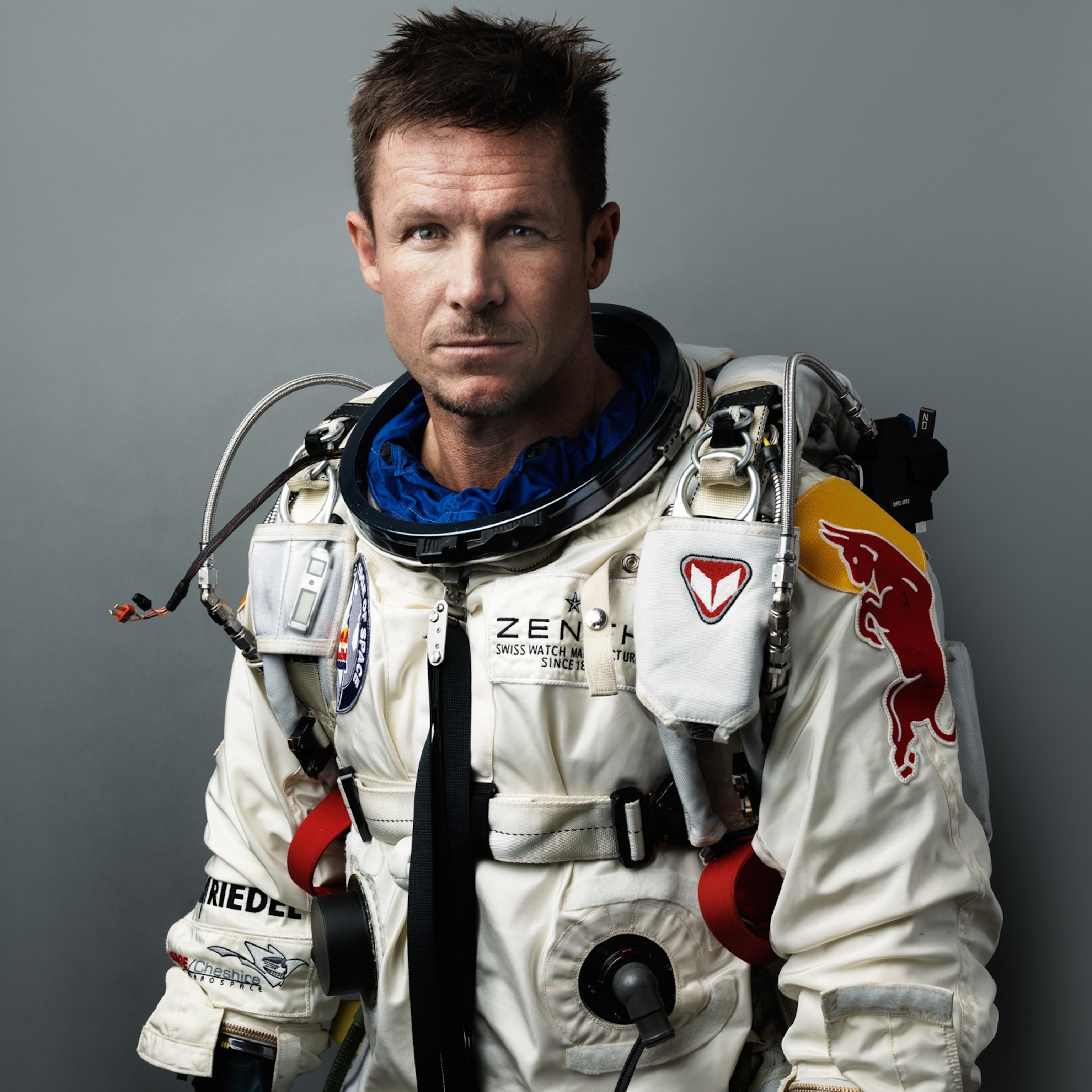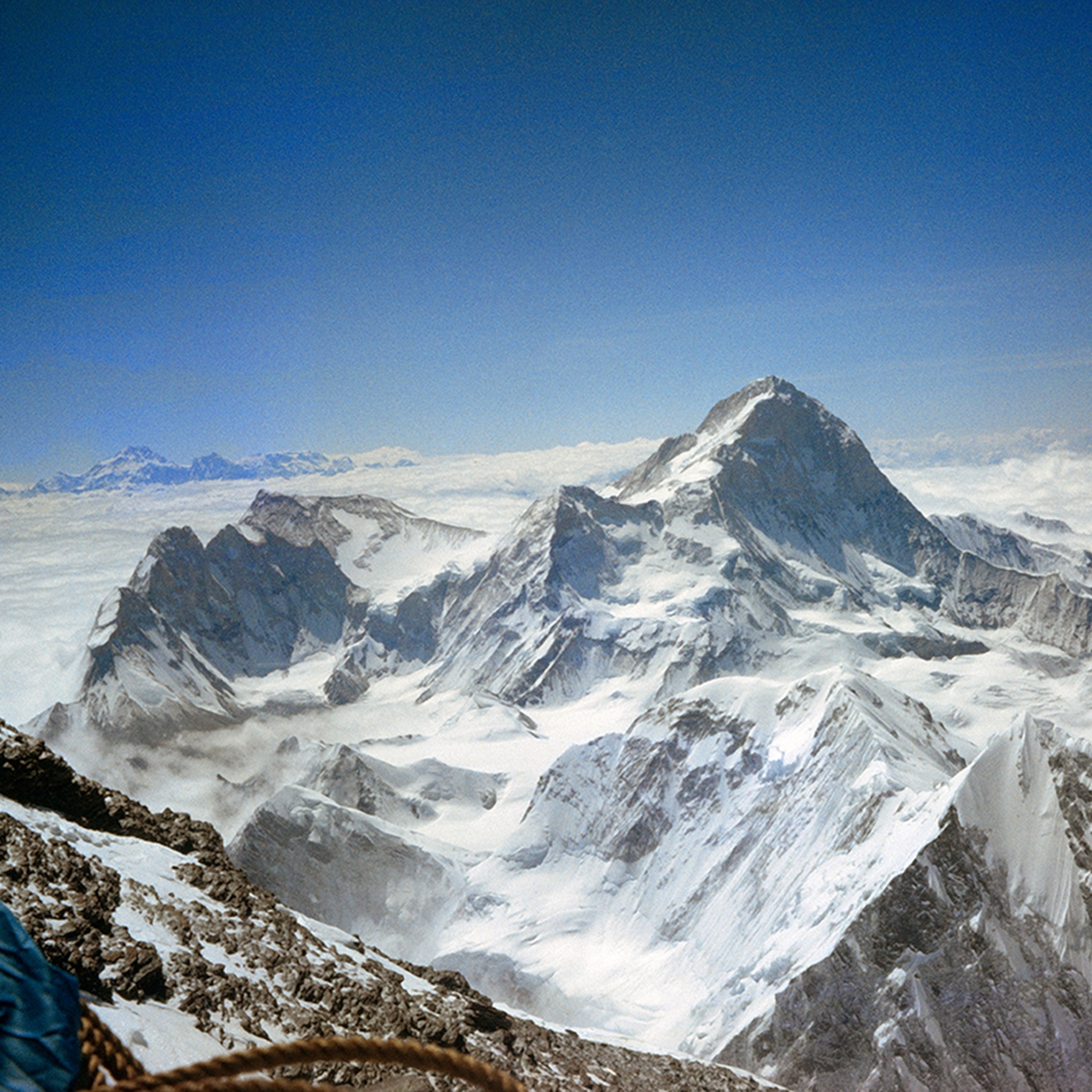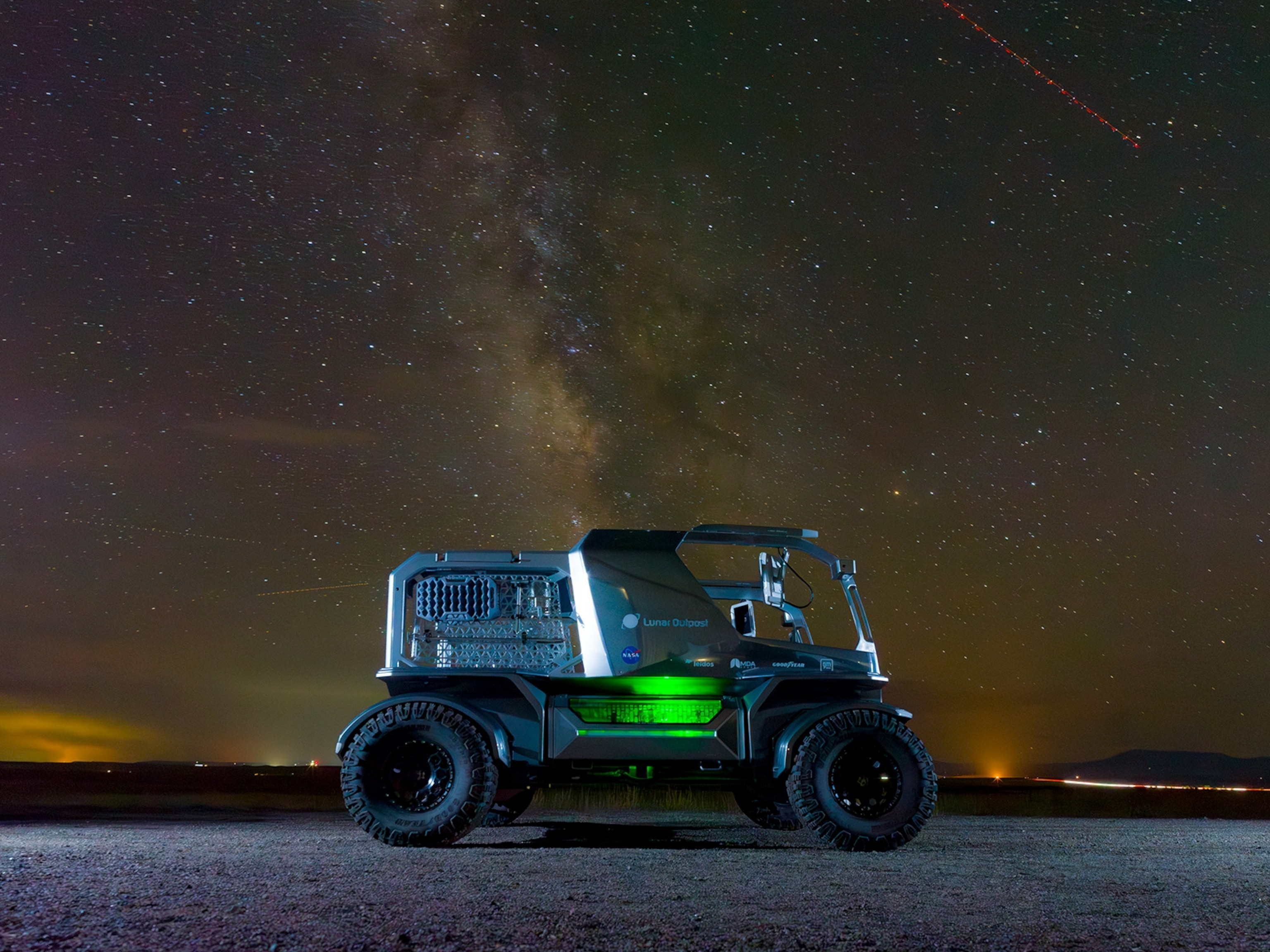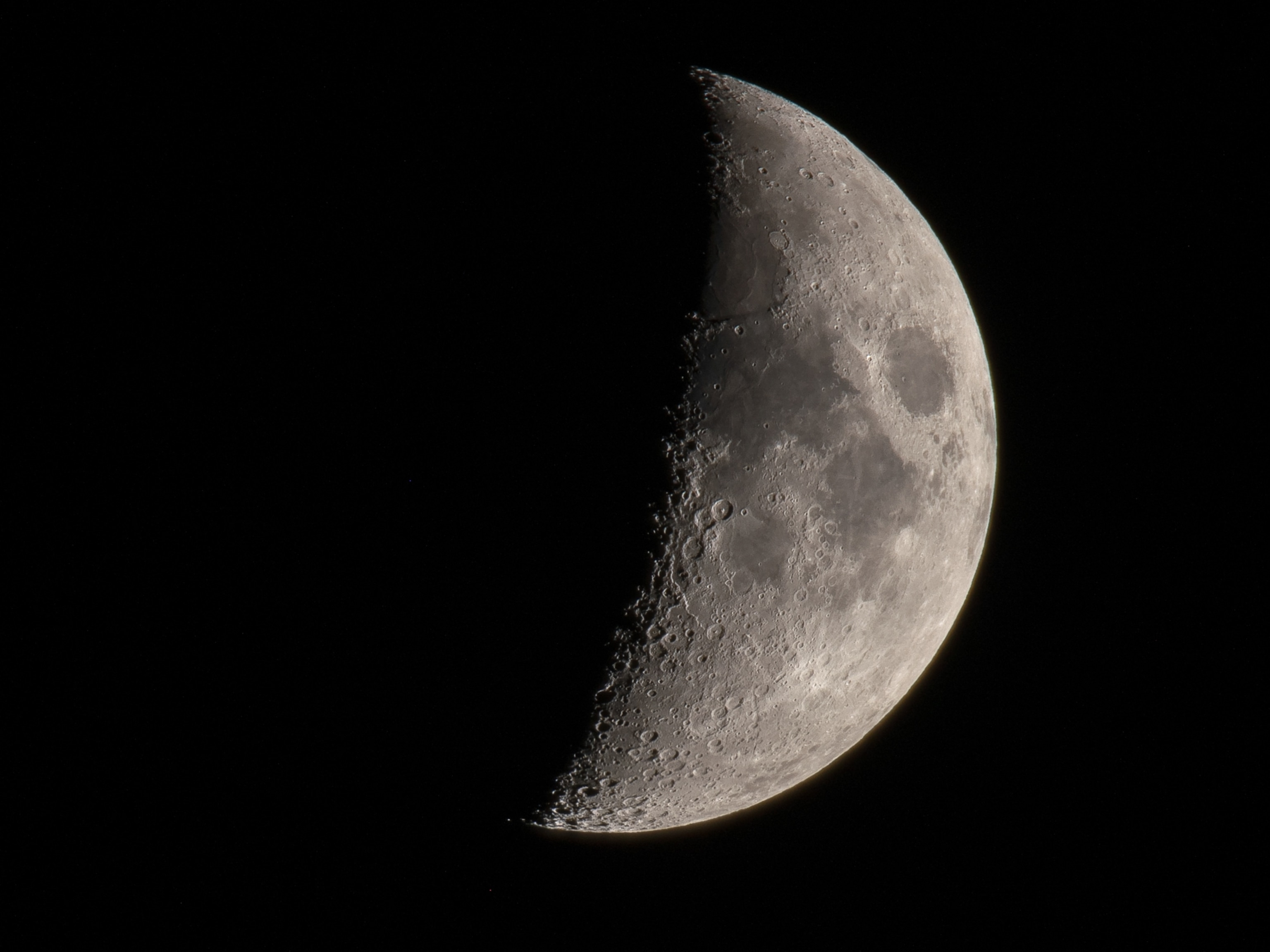
BASE Jumper Felix Baumgartner
An Austrian skydiver leaps from 24 miles above the Earth and becomes the first human in free-fall to break the sound barrier.
On October 14, 2012, Felix Baumgartner stepped onto a small platform the width of a skateboard attached to a capsule hovering at 127,852.4 feet above Earth. Millions of people around the world were watching via Internet connections and cable television feeds as the Austrian BASE jumper prepared to jump into thin air.
“I wish the whole world could see what I see,” said Baumgartner. “Sometimes you have to go up really high to understand how small you really are.”
Then Baumgartner leapt.
With that leap, the 43-year-old completed his seven-year quest to break the record for highest free fall. “Breaking the speed of sound by a human—it was one of the last firsts,” he said just before he jumped.
In the stratosphere’s thin air, Baumgartner accelerated to 843.6 mph (Mach 1.25), becoming the first human to break the speed of sound without mechanical help. The previous Cold War-era record of 102,800 feet was set by Baumgartner’s mentor and Red Bull Stratos adviser, retired Air Force Col. Joe Kittinger, 84, who made three leaps in 1959 and 1960 to test the effects of high altitude and extreme acceleration on the human body.
To reach the astounding height of 128,177.5 feet, Baumgartner was enclosed in a pressurized capsule attached to a massive helium balloon. As he soared upward at a rate of 1,000 feet per minute, the records began to fall. First, Baumgartner surpassed Kittinger’s record, then the record for highest manned balloon flight.
The specially designed capsule reached equilibrium with the atmosphere and began to hover right around 127,852.4 feet. Baumgartner depressurized the cabin, opened the capsule door, and stepped out. He stood on the edge of the heavens; above him was the cold darkness of space, below him was Earth lit by the sun.
Despite all the technology, money, and experience available to them, Baumgartner and the Red Bull Stratos project—made up of 300 support staff, more than 70 of which were engineers, scientists, and physicians—were challenging the unknown.
In the thin air, Baumgartner accelerated past the speed of sound. (Coincidentally, it was 65 years to the day that Chuck Yeager had first broken the sound barrier in a Bell X-1 jet.) Through an infrared camera lens, the world watched Baumgartner begin to spin. If the spin became too fast, his body would turn into a centrifuge pulling the blood away from his core into his head and feet—an action that could result in death. In this moment, it was clear just how vulnerable Baumgartner was.
“The exit was perfect, and then I started spinning,” says Baumgartner. “It was really brutal at times. I thought for a few seconds that I would lose consciousness.”
Baumgartner’s jump was also a pivotal test for the next generation of space suit. At extreme altitudes it would keep Baumgartner alive, but for the former paratrooper who is used to jumping in more flexible clothing, the suit wasn’t as responsive, making it difficult to make adjustments while flying.
(Felix Baumgartner, famed pilot and BASE jumper, dies at 56.)
Baumgartner was able to regain control from the spin. The jump lasted just over nine minutes—four minutes and 20 seconds of which were spent in free fall. Baumgartner landed safely, falling to his knees as news crews and support staff ran toward him. He had overcome panic attacks, ignored critics who had labeled the project a publicity stunt, maintained focus through five years of ups and downs, and then simply survived.
“When you stand up there on top of the world, you become so humble,” said Baumgartner to reporters. “It’s not about breaking records anymore. It’s not about getting scientific data. It’s all about coming home.”
—Fitz Cahall
THE INTERVIEW
Adventure: There was a moment just before your jump where you radioed back to your mentor, Joe Kittinger, that the door to the capsule wasn’t opening. It seemed like a particularly tense moment. What happened?
Felix Baumgartner: I was confused. I was watching an altimeter to the side. The numbers stopped moving and I thought the door should open. Kittinger talked me through it and explained that the capsule was still depressurizing. The altimeter was stuck. I had no visual reference. I had a bad feeling. What if the door didn’t open? We couldn’t repressurize.
A: What was that like when the door opened?
FB: It was a big release.
- National Geographic Expeditions
A: At what stage in the flight were you committed to jumping?
FB: I had been committed for a long time. I had done the jump in my mind many, many times. I was ready. Aside from something mechanical happening, like one of the oxygen tubes not releasing from the suit, I was going to jump.
A: There were some people who criticized the jump as a publicity stunt. How do you respond to that?
FB: To say that this was just marketing was ridiculous. It was a scientific project. There aren’t a lot of firsts left out there. People have climbed the tallest mountains, rowed across the Atlantic. Breaking the speed of sound by a human—it was one of the last firsts. You have to do the marketing to finance a project like this. Somehow it needs to be paid for. In the end we were inspiring millions of people, all around the world.
A: Is there one question or one point that has gotten lost in all the media coverage surrounding your jump?
FB: One thing I think is important to remember is all the people who have lost their lives going to space. The Apollo 1, they died on the ground, before takeoff [during a launchpad test] when the capsule caught fire. They sacrificed their lives for us. Without them, we wouldn’t have gone to space. We wouldn’t have satellites. We wouldn’t be talking on this cell phone.







